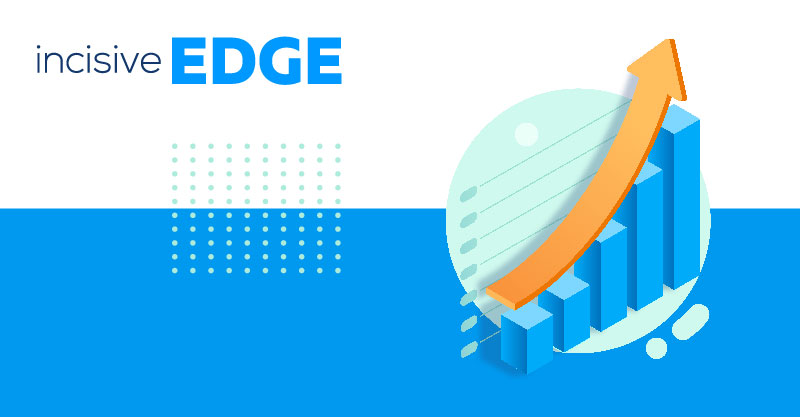Augmented reality marketing is already being (relatively) widely used in the B2C realm, but can it really be of benefit to B2B marketing, too?
Since the Pokémon Go craze began last summer, augmented reality (AR) has slithered its way into the forefront of public consciousness in a big way. Many inbound marketing articles were inspired by it – concerning both B2C and B2B marketing – with commentators celebrating the tactics used.We know this because we penned a fair few ourselves. “Timing is everything!” we told readers, referring to the fact that Pokémon Go’s summer release undoubtedly contributed hugely to the app’s success. “Breathe new life into old favourites!” we said, noting that millennial nostalgia for trading Pokémon Cards broadened the demographical user-base of the new-fangled application.
But, if there was one point we made louder than all the others –particularly when addressing our B2B marketing audiences – it was this: “Utilise the latest technology!”
Certainly! Pokémon Go's success as the fastest top-grossing mobile app in history was primarily due to its utilization of AR technology. Inbound marketers and application developers should take note of the potential of AR marketing, augmented reality solutions, and a good AR app.
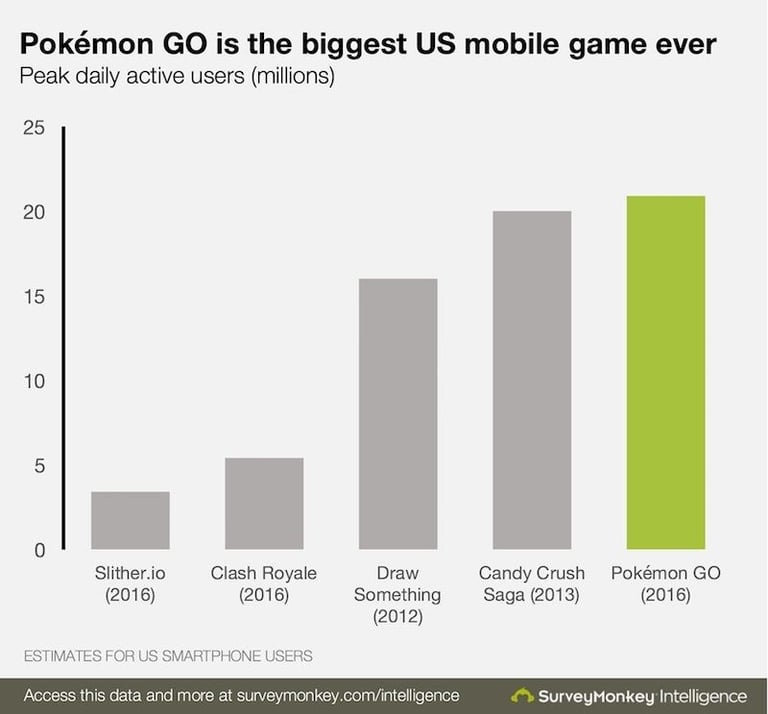
(Image source: macrumors.com)
Inbound marketing strategies – and particularly B2B marketing strategies – can, if we’re not careful, far too easily fall into the trap of having us churn out, if not quite the same old content, the same old content formats time and time again. Blogs. eBooks. Whitepapers. Newsletters. Etc., etc., etc.…
Of course, this material is and always will be of critical importance for all inbound marketing initiatives – not least for SEO purposes and lead generation. But just think what your B2B marketing efforts could achieve if all of a sudden you dropped an ultra-modern, super-cool and exciting augmented reality marketing campaign into the mix. Now that is something that would make the world sit up and pay attention to what you’re doing.
Welcome to Content Shock
Let's be frank – in 2023, the online world is in a state whereby there is more content than users could ever possibly hope to consume in a lifetime. This, indeed, is a phenomenon of Web 2.0 that hasn't gone unnoticed.
In the early days of Web 1.0, the internet was basically a big fat information dump, mostly static, with very little interaction between content creators and end users.
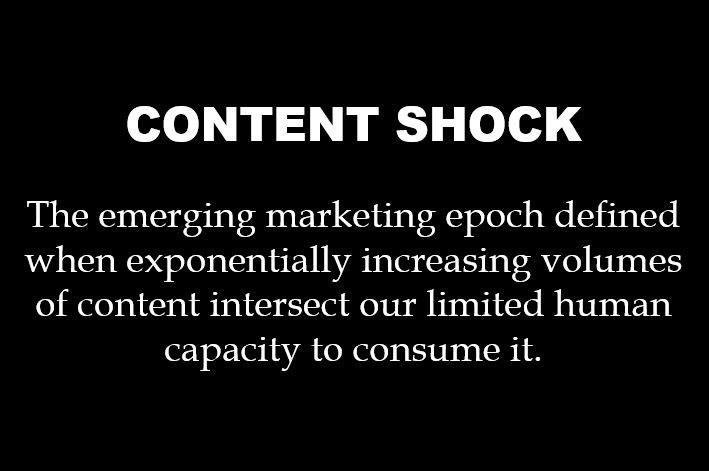
(Image source: businessesgrow.com)
With the emergence of Web 2.0, everything became interactive, thanks to social media platforms like Facebook, YouTube, Twitter, and LinkedIn. Amazon and eBay also played a role in this internet revolution. Users transformed from passive consumers to active contributors, engaging in status updates, tweets, videos, music, blogs, comments, and implementing marketing and sales strategies, AR marketing strategy, and retailing and consumer services.
Today, we’re at a point where another 2.5 exabytes of data are created for the World Wide Web every single day. By 2020, it’s forecast that there will be 44 zettabytes (or 44 trillion gigabytes) of digital information available online.
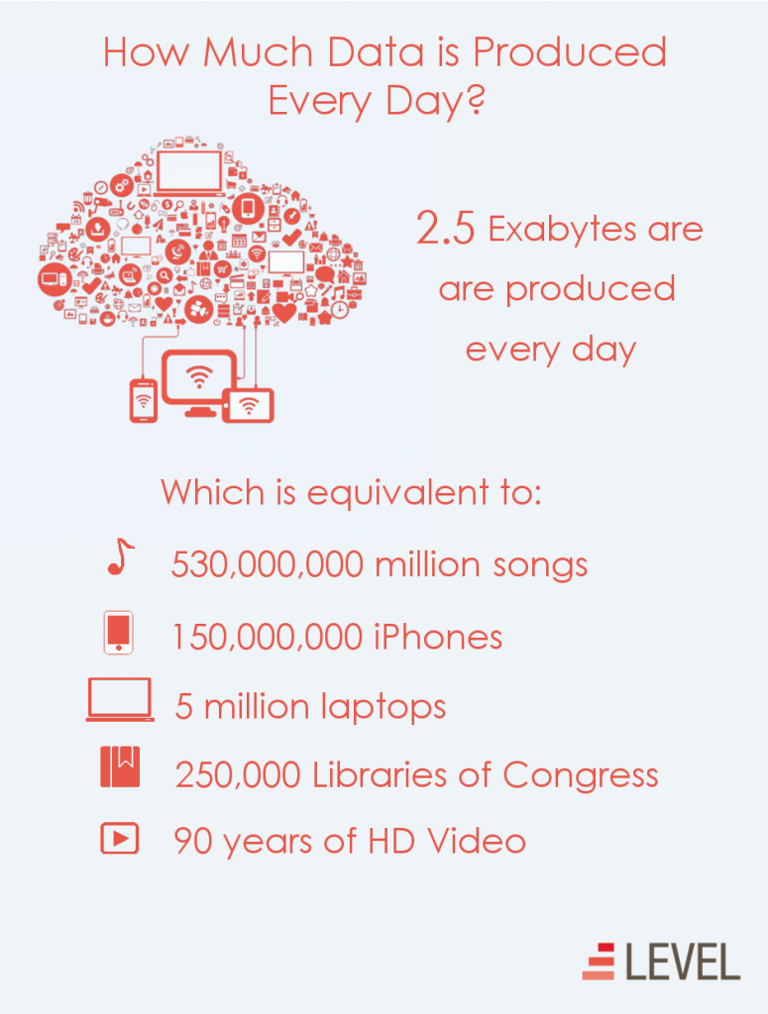
(Image source: northeastern.edu)
What this Means for Inbound Marketing
There’s a lot of data out there, for sure. And, as you will no doubt have already surmised yourselves, supply is far-exceeding demand.
This is the phenomenon that Mark Schaefer labelled “Content Shock” in a 2014 blog post of the same name.
Schaefer argues – as is revealed in the post’s subtitle – that content marketing is not a sustainable strategy. Why? Simply because there is just so darn much of it going on.
“Of course the volume of free content is exploding at a ridiculous rate,” he writes. “Depending on what study you read, the amount of available web-based content (the supply) is doubling every 9 to 24 months. Unimaginable, really.
“However, our ability to consume that content (the demand) is finite. There are only so many hours in a day and even if we consume content while we eat, work and drive, there is a theoretical and inviolable limit to consumption, which we are now approaching.”
Let’s take WordPress as an example. It’s by far the world’s most popular and widely used content management system (CMS), and any blogger worth their salt will be familiar with it. WordPress runs 27% of the entire internet, would you believe. But, even so, that’s only accounting for just over one quarter.
And when you consider the fact 76.9 million new posts are created on WordPress sites alone each month – not to mention the 41.4 million additional comments these posts generate – we start to realise that any single piece of inbound marketing content we publish is merely a drop in what is a vast, vast, vast ocean.
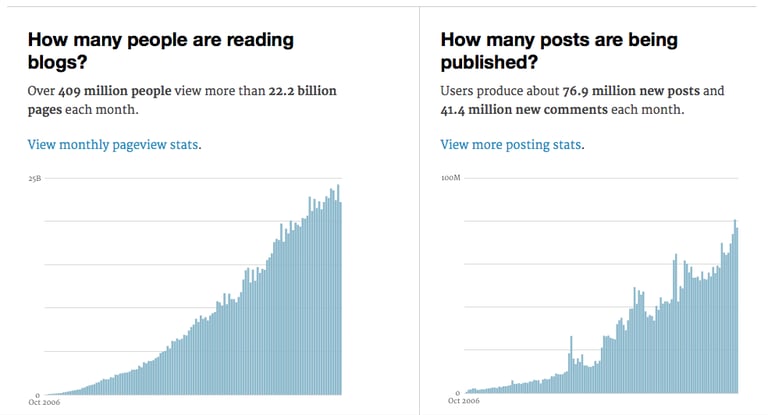
(Image source: wordpress.com)
Augmented Reality Marketing – The Remedy for A Content-saturated World
In today's content-saturated world, where everyone's appetite for content remains insatiable, new and exciting frontiers are emerging to captivate audiences. Among them, AR experiences, marketing strategy, and virtual reality are taking centre stage, offering innovative ways to engage and enthral users like never before.
In fact, people still actively seek out fresh content every single day of their lives.
But the problem persists – more words are being written that can ever be read. To put it another way, the competition for drawing eyes to our B2B marketing content gets fiercer and fiercer with each day that ticks by – and that’s exactly why B2B companies need to take notice of augmented reality marketing.
B2B marketing – like all inbound marketing – is about telling stories and educating users about the benefits the business has to offer other businesses. In other words, what we’re trying to do is show how the customer’s world will be different and better if they choose our services.
And what better way to do that than by showing our customers how we’re different and better through the lens of an augmented reality marketing campaign.
AR technology offers a captivating marketing experience, allowing users to immerse themselves in a real-world environment enhanced by superimposed digital objects through their smartphones or tablets. This unique immersion not only increases customer satisfaction but also opens up diverse possibilities for utilizing augmented reality in marketing strategies and various AR applications.
Clearly, augmented reality finds a comfortable home in games apps, such as the aforementioned Pokémon Go. But for B2B marketing purposes, an appropriate and meaningful application of the technology is a little trickier, and B2B marketers must be careful that they use AR in a manner that effectively demonstrates the greater value of the business solution or message being promoted.
Nonetheless, when applied well, the result is one of surprise, delight and even amazement – and if these emotions can be conjured out of and combined with an immersive 3D learning experience… well, it would beat the pants off any competitor’s content-shocked blog post any day of the week.
A B2B Augmented Reality Marketing Use Case
Such a claim requires an example – and we turn to leading global IT solutions provider Hexagon to provide it.
Hexagon, like many B2B companies, faced the challenge of engaging their investors with their annual report. Normally, such a report would have been in the form of a paper or PDF document, possibly accompanied by a PowerPoint presentation. And indeed, a printed report is exactly what they produced – but with one important difference.
“Hexagon Solutions wanted to share a video interview with their CEO accompanied by 3D animated graphics within their annual report,” explains an article in Marxent. “Using a page in the printed annual report as the AR trigger image, Hexagon Activate launches a futuristic Augmented Reality “stage” and video frame with animated 3D models to accent key points in the video.”
Watch the AR at work in the video below.
What a way to capture, maintain and engage the investors’ interest in what would have otherwise been a regular, run-of-the-mill, and quite frankly boring presentation. This is the power of B2B augmented reality marketing.
(If you want to take a look at Hexagon’s augmented reality marketing presentation for yourself, you can access the AR trigger image that will initiate the AR effect here.)
The Ball’s in Your Court
Immersive, B2B augmented reality marketing experiences will no doubt continue to rise in prevalence over the coming years, and it’s important that the whole inbound marketing industry pays attention. The beauty of augmented reality marketing is that it can amplify a customer’s receptiveness to your B2B company’s key value propositions – be it through creating mesmerizing financial reports, product demonstrations, AR infographics, or whatever it may be.
It’s these types of B2B marketing initiatives that will start to separate the competition as the battleground for customer attention continues to get tougher and tougher in an increasingly content-shocked world. We can’t expect our customers to keep trading Pokémon Cards in 2023 and beyond, and augmented reality marketing is one solution to keep a new generation of B2B buyers engaged.







